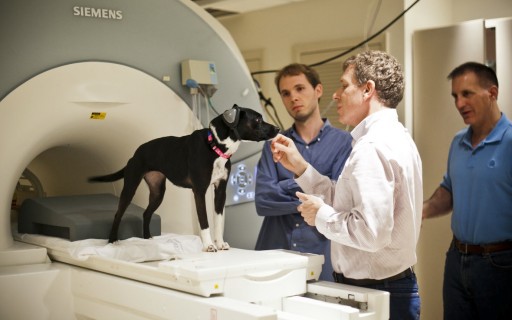What is your dog thinking? Brain scans unleash canine secrets
May 7, 2012
Emory Center for Neuropolicy researchers at Emory University have developed a new method to scan the brains of alert dogs and explore their minds. The technique uses functional Magnetic Resonance Imaging (fMRI), the same tool that is unlocking secrets of the human brain.
“It was amazing to see the first brain images of a fully awake, unrestrained dog,” says Gregory Berns, director of the Emory Center for Neuropolicy and lead researcher of the dog project.
The researchers aim to decode the mental processes of dogs by recording which areas of their brains are activated by various stimuli.
Ultimately, they hope to get at questions like: Do dogs have empathy? Do they know when their owners are happy or sad? How much language do they really understand?
In the first experiment, the dogs were trained to respond to hand signals. One signal meant the dog would receive a hot dog treat, and another signal meant it would not receive one.
The caudate region of the brain, associated with rewards in humans, showed activation in both dogs when they saw the signal for the treat, but not for the no-treat signal.
“These results indicate that dogs pay very close attention to human signals,” Berns says. “And these signals may have a direct line to the dog’s reward system.”
Ref.: Gregory S. Berns, Andrew M. Brooks, Mark Spivak, Functional MRI in Awake Unrestrained Dogs, Social Science Research Network, 2012 [download] (open access)
